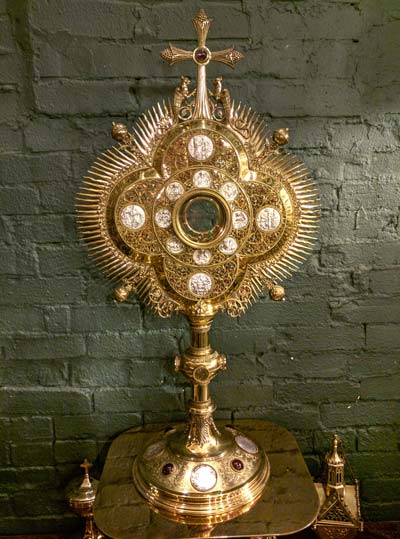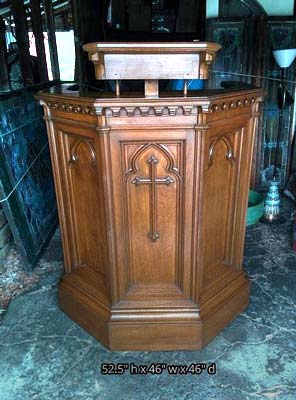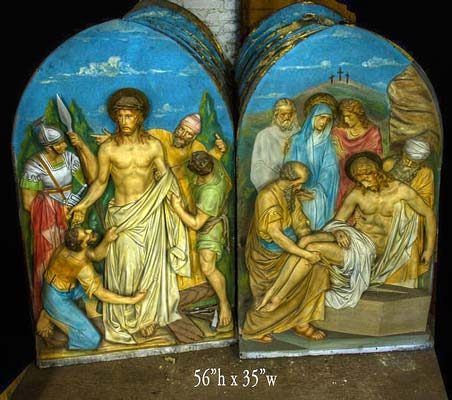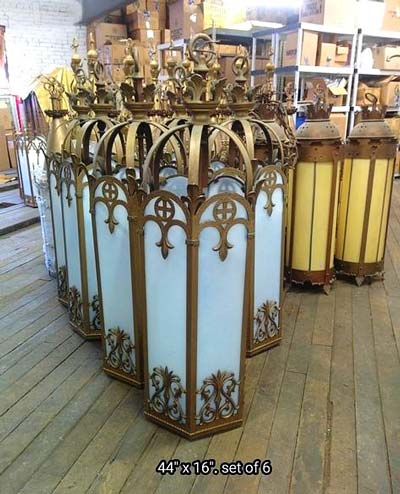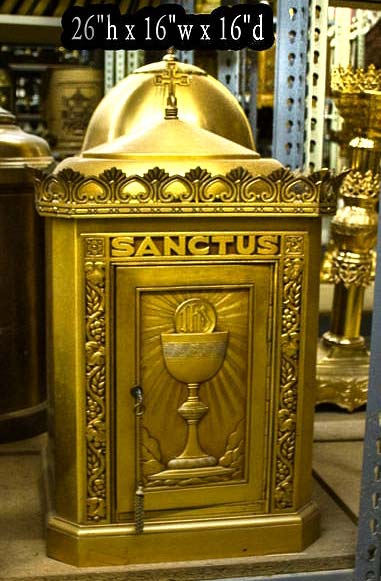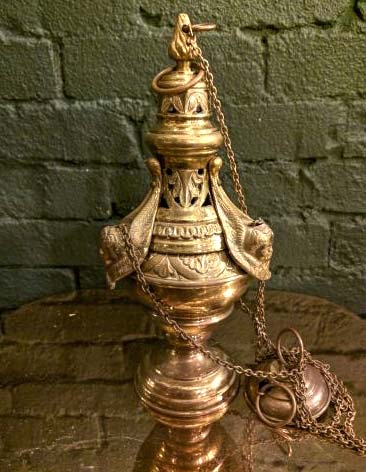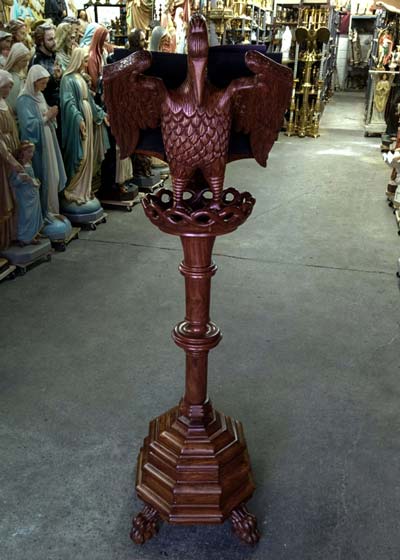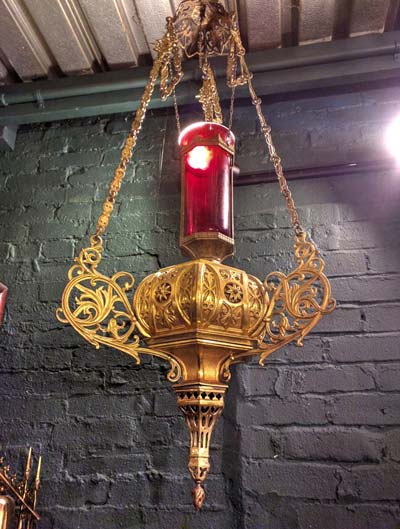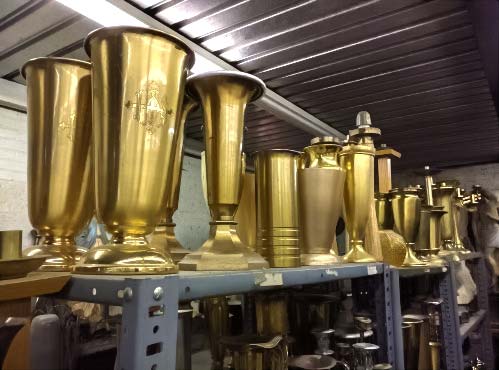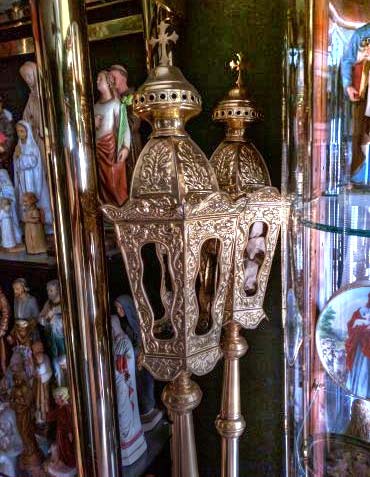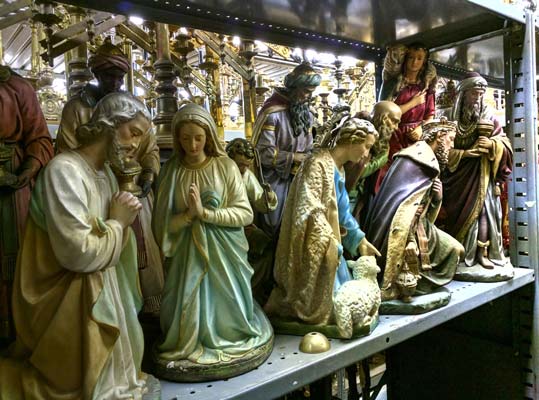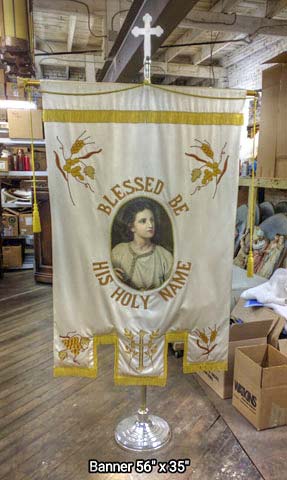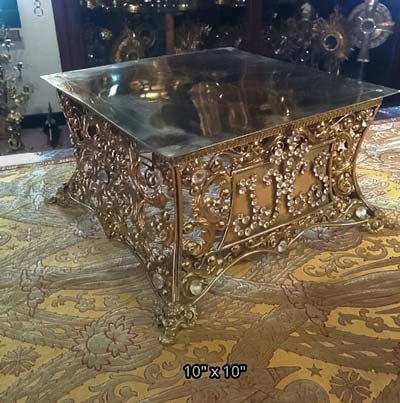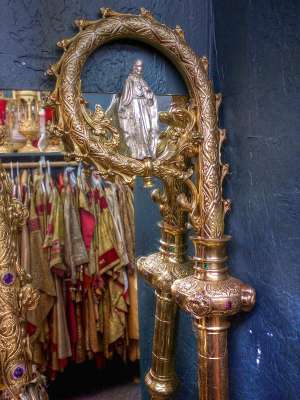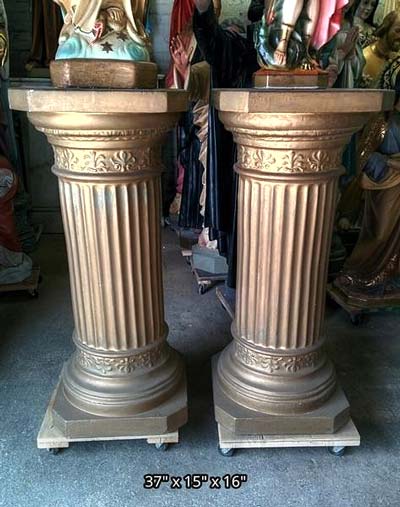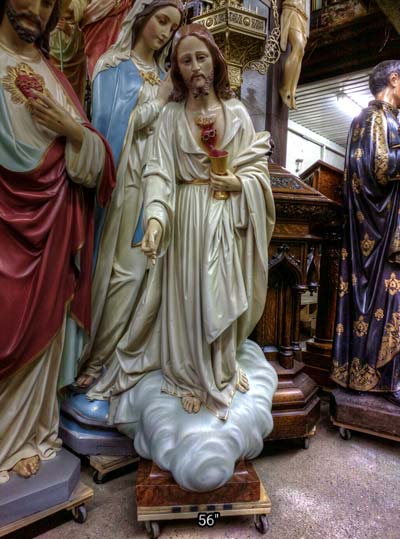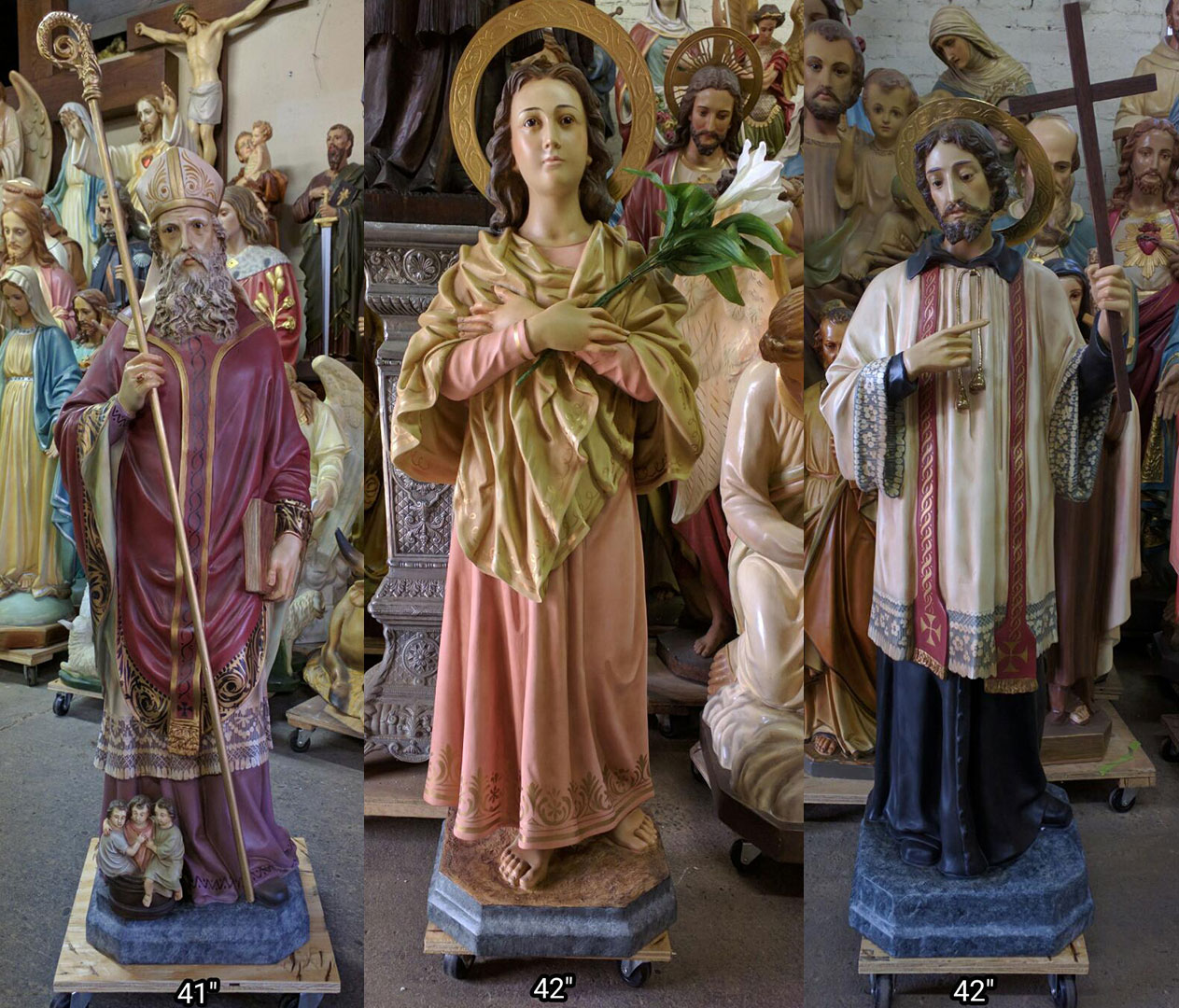

May 15, 2019 - Almost too busy to update these tidings... almost!
The enthusiastic response from our Catholic community has been overwhelming and exhilarating; weeks are flying by with projects, appointments, shipments, and emails overflowing, and can't thank you enough! We're elated to help so many parishes find special items to put back in service, to be appropriated and appreciated again by clergy and parishioners.
Many of these beautiful items were made at a time when Churches and Diocese would obtain the most skilled craftsmen to build within the church itself, no expenses spared, quality and beauty top priority, all for the Glory of God. Unfortunately much has been destroyed over the years of changes, and some of the most incredible works were impossible to save due to the nature of how they were built. Great marble altars were often built right into the foundation, murals and paintings direct to walls, plaster or wood carved statues designed for the exact height of niches. Even wood trim, doors, adornments, etc... all envisioned and created on-site.
However those marble or plaster altars sunk into the foundation, don't come out without breaking apart. The artworks now found hidden underneath layers of plaster or wall paper, but ruined. Closed churches weren't maintained and statues disintegrated, wood rotted. Fortunately however he was able to save a relatively small portion of these historical items, which once dominated our church interior landscapes. My father rescued what he was capable of for the last 50 years, and our warehouses are the culmination of his past and continuous efforts. And while we often feel there's not enough hours in the day, there's always plenty of joy from the work, and gratitude to and from those working with us.
November 9, 2018 - A Relic collection of Christian Saints! Our event in Estero Florida.
If you're in the Estero Florida area, this is your chance to view a wonderful Relic collection of Christian Saints in lovely reliquaries at the southwest Florida Public Library. They will be on display the entire month of December.
Approximately 100 1st class relics of the Saints will be on display including martyrs, Abbott's, Confessors, Popes, The True Cross, part of the Manger of Christ, Padre Pio, Francis of Assisi, Saint Therese the Little Flower of Jesus, etc.
One of the greatest Catholic traditions, almost lost beginning in the 1970s -- hopefully our display will help inspire those that remember, as well as those that wish to learn about and venerate the saints.
When: December 1, 2018 through December 31, 2018
Where: South County Regional Library, 21100 three Oaks Pkwy, Estero, FL 33928
Some photos of past events:
 Relic-Reliquary-Display-1
Relic-Reliquary-Display-1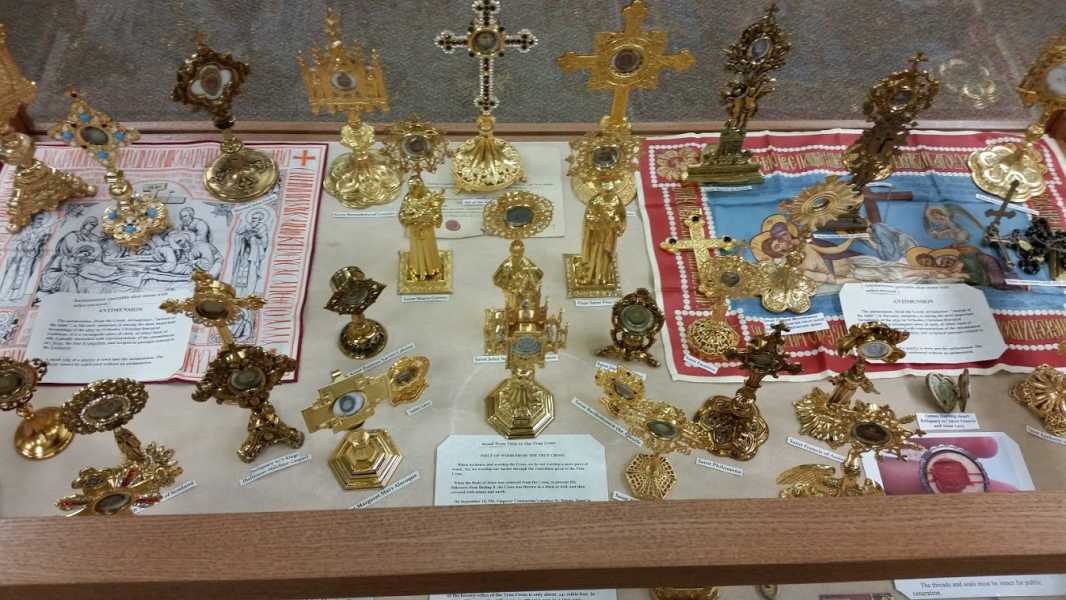 Relic-Reliquary-Display-2
Relic-Reliquary-Display-2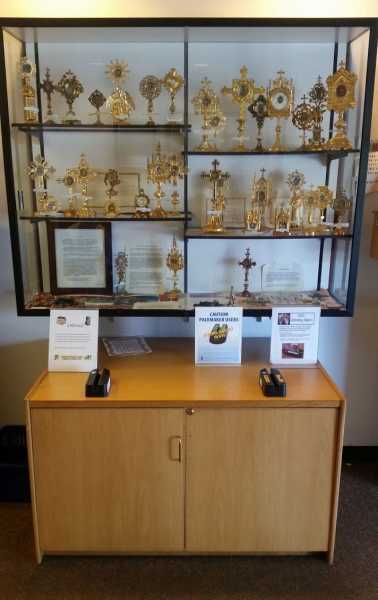 Relic-Reliquary-Display-3
Relic-Reliquary-Display-3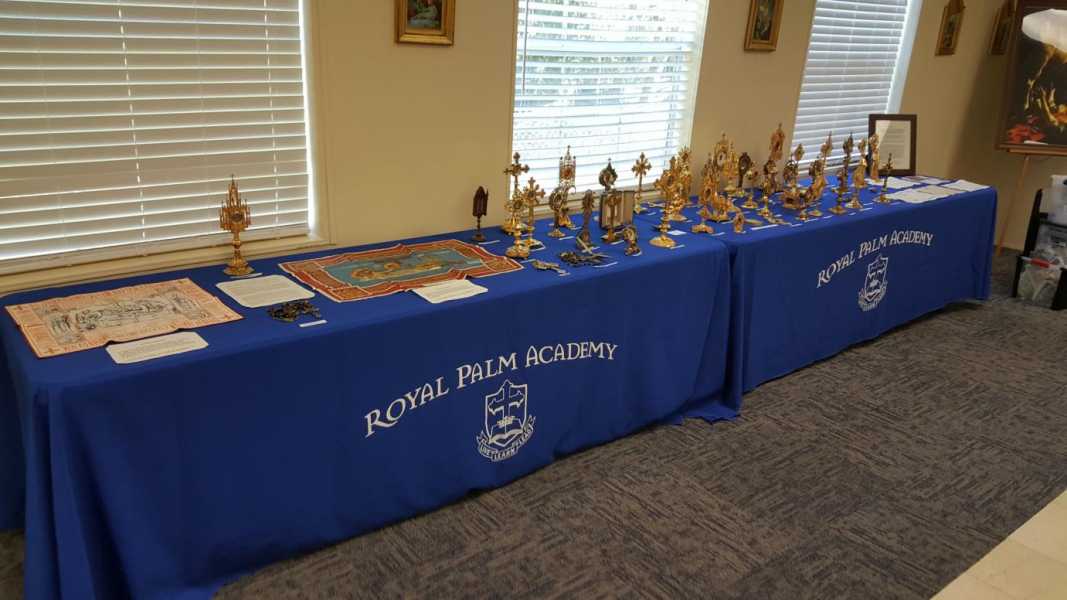 Relic-Reliquary-Display-4
Relic-Reliquary-Display-4 Relic-Reliquary-Display-5
Relic-Reliquary-Display-5 Relic-Reliquary-Display-6
Relic-Reliquary-Display-6 Relic-Reliquary-Display-7
Relic-Reliquary-Display-7
November 1, 2018 - A wonderful summer, busy winter.
Thank you all for a wonderful summer, sincerely. Many of our dearest longtime customers came to see us, and met or spoke with so many interesting people from all over the world. Had some exciting and rewarding side projects, and more visits than we ever had in past summers! Nothing has slowed down, which brings me to the busy winter. I'm already close to max for appointments until the new year, and visits are limited. Email is the best way to reach me -- I can send photos and prices, and helps me keep track. I know its a bit early, but have a joyous Christmas season!



